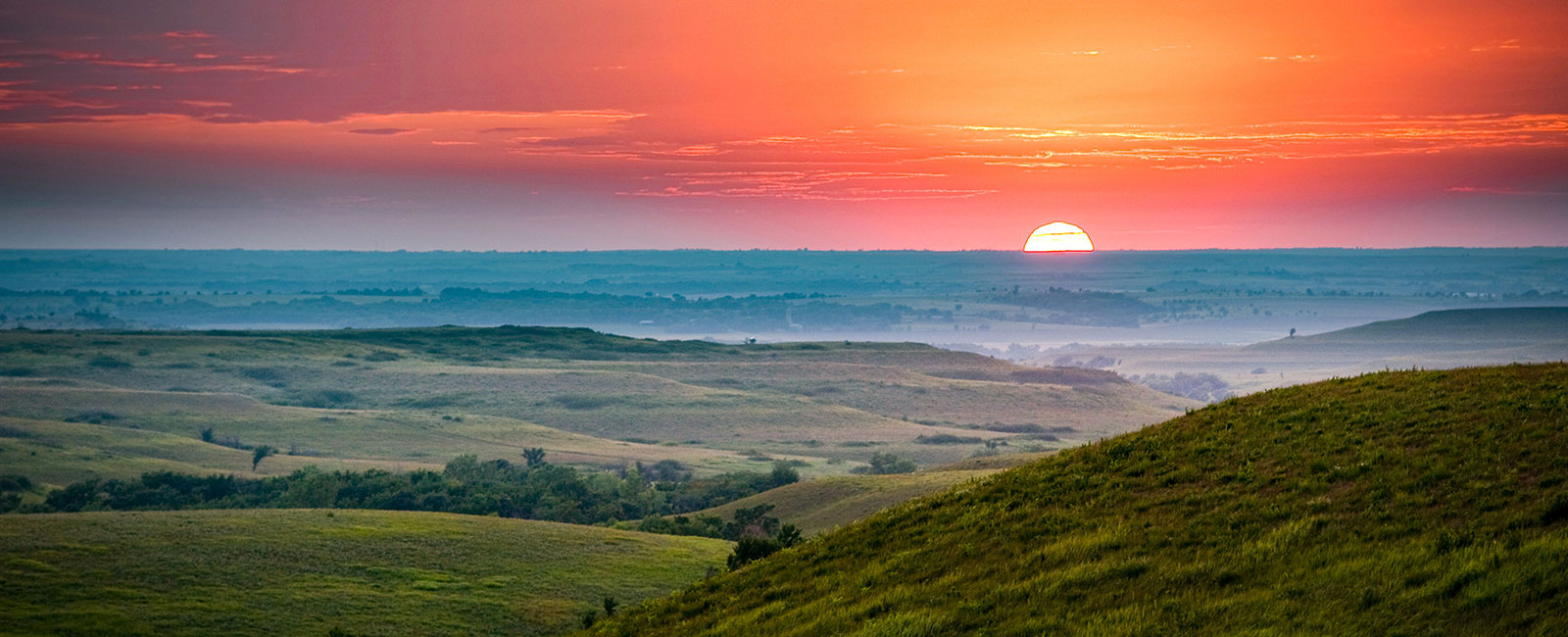
Land Acknowledgment
© Photo by Tommy Theis for Kansas State University
As the first land-grant institution established under the 1862 Morrill Act, Kansas State University begins and continues through Indigenous contexts. We acknowledge that the state is home to many Indigenous nations, including the Kaw, Osage and Pawnee, among others. The name "Kansas" itself originates from the Kaw word "Kaáⁿze," meaning people of the south wind. Kansas is currently home to four federally recognized nations, the Prairie Band Potawatomi, the Kickapoo Tribe of Kansas, the Iowa Tribe of Kansas and Nebraska, and the Sac and Fox Nation of Missouri in Kansas and Nebraska. Through ongoing partnerships, education initiatives, and community collaboration, Kansas State University strives to build relationships with these sovereign nations grounded in reciprocity, responsibility, and respect.
A land acknowledgment is a powerful way of showing respect and gratitude to those whose territory we occupy. It moves us towards an accurate accounting of historical events. Land acknowledgments are not, however, substitutes for relationships and reciprocity with Indigenous people.
Our Ongoing Commitment
This land acknowledgment represents the beginning of our work, not the end. Kansas State University is committed to:
- Supporting Indigenous students through scholarships, mentorship, and culturally responsive programming
- Incorporating Indigenous perspectives and knowledge into our curricula and research
- Building and maintaining relationships with tribal governments and Indigenous communities
- Providing education about Indigenous history, culture, and contemporary issues
- Examining and addressing institutional policies that may perpetuate harm to Indigenous communities
- Creating spaces for Indigenous voices and leadership within our university community
- Developing and communicating an accurate and detailed accounting of the Kansas State University Land Grant History
Land Acknowledgment Teaching Guide
For faculty, staff, and student leaders who wish to incorporate the land acknowledgment into their teaching and programming, consider these approaches:
In Academic Settings
- Context Setting: Explain why land acknowledgments matter before reading it, helping audience understand it's not just a formality.
- Historical Connection: Connect the acknowledgment to specific course content when relevant (history, sociology, geography, environmental studies, etc.).
- Reflection Time: Allow moments of silence or reflection after reading the acknowledgment.
- Follow-up Discussion: Facilitate conversation about what the acknowledgment means and how it relates to ongoing responsibilities.
- Action Orientation: Connect acknowledgment to concrete actions students and community members can take. Staff and faculty are encouraged to cite actions taken by the university.
Best Practices
- Read with intentionality and respect, not as a routine recitation.
- Learn proper pronunciation of tribal names and places (Pronunciation Guide).
- Avoid treating the acknowledgment as a "box to check" - it should be meaningful each time.
- Be prepared to answer questions about local Indigenous history and ongoing tribal presence.
- Connect acknowledgment to learning about contemporary Indigenous issues and sovereignty.
Tribal Nations with Kansas Connections
- The Kaw Nation
- Iowa Tribe of Kansas and Nebraska
- Kickapoo Tribe in Kansas
- Prairie Band Potawatomi Nation
- Sac and Fox Nation of Missouri in Kansas and Nebraska
- Along with many other nations dispersed across North America.
Pronunciation Guide
Proper pronunciation demonstrates respect for Indigenous languages and peoples. Here are guides for key terms in our land acknowledgment:
Tribal Names
- Kanza KAN-zah (a.k.a)
Kaw caw (like of a crow) - Arapaho ah-RAH-pah-ho
- Cheyenne shy-ANN
- Comanche kuh-MAN-chee
- Kiowa KIE-oh-wah
- Osage oh-SAGE (or)
WAH-zhah-zheh (in Osage language) - Pawnee paw-NEE
- Wichita WITCH-ih-taw
Place Names
- Manyinkatuhuudje (Blue Earth Village) Mahn-yin-kah-too-HOO-jay
Note: These are approximate pronunciations using English phonetics. We encourage learning from Indigenous speakers when possible and acknowledge that pronunciation may vary among different communities and time periods.